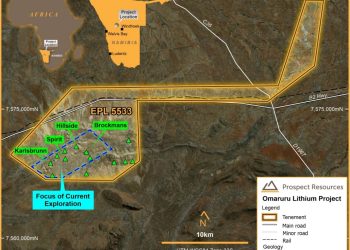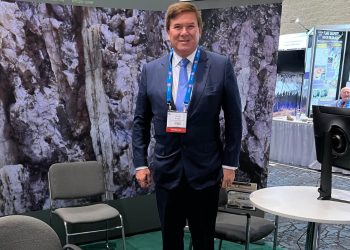
Namibia’s lithium refining industry is forecasted by consultancy firm McKinsey & Company to contribute N$3.1 billion to the country’s gross value added by 2030, while creating 5,800 jobs.
By 2050, the contribution is expected to rise to N$4.7 billion, with approximately 8,600 jobs created.
The comprehensive analysis outlines a breakdown of the economic impact, “with projections indicating direct contributions of US$59 million, US$57 million indirectly, and US$48 million induced by 2030.”
Moreover, the report foresees the creation of approximately 5,800 jobs, encompassing 1,300 direct, 2,300 indirect, and 2,100 induced positions.
Looking towards 2050, the figures escalate, forecasting a potential N$4.7 billion (US$248 million) in gross value added, “supported by US$89 million direct, US$86 million indirect, and US$72 million induced, along with the generation of around 8,600 jobs”.
The report emphasised that with two active lithium projects and the assumption of two more becoming operational, Namibia’s lithium refining industry could boost mining production by 50%, resulting in substantial value addition.
“The Andrada mining project is targeting a production volume of 15k tons of Lithium carbonate equivalent (LCE), while Lepidico projects 5k tonnes of LCE. Seven other projects are in different stages of exploration with varying likelihood of advancing into production,” McKinsey said.
The report indicates that a single project, covering mining and refining and aiming for 15k tons of LCE, is expected to employ nearly 1,000 workers, with refining operations constituting 20% of the workforce.
McKinsey recommends Namibia to leverage the demand for feedstock from EU lithium refining projects, expected to fulfil EU demand but facing a shortage due to limited mining supply in the EU.
“To capitalise on the demand from the EU, and capture additional value from its existing lithium production, the proposed play for Namibia is to produce technical-grade lithium carbonate, an intermediate product, with off take agreements to be put in place with downstream EU refineries,” said the report.
Namibia might explore producing battery-grade lithium products like Lithium Hydroxide and Carbonate, but the EU’s substantial expansion of refining capacity could limit demand for refined battery-grade lithium products from this strategic market, the analysis observed.
In the long term, Namibia’s lithium industry could explore expanding into the manufacturing of LFP and LMFP cells.
“Namibia can capture this opportunity by having established players in the Namibian lithium industry, such as Andrada and Lepidico, collaborate with EU lithium refining project operators in a joint venture to acquire expertise and funding to establish a refining facility in Namibia,” the report stated.
The study suggests that the phased approach begins with a smaller capacity pilot refining plant to mitigate risks, optimise costs, and validate market viability before scaling up to a full-scale facility.
This comes after in 2020, the lithium mining and refining value chain totalled around US$8 billion, contributing almost 20% to the overall battery value chain.
The EV transition is driving a 19% annual demand growth for lithium products, specifically battery-grade materials like lithium carbonate and lithium hydroxide.
While the current project pipeline is anticipated to meet demand until 2026, additional early-stage projects are required to fulfil demand up to 2032.
McKinsey notes that China, although expected to remain a major producer, may lose market share as new producing countries enter.







